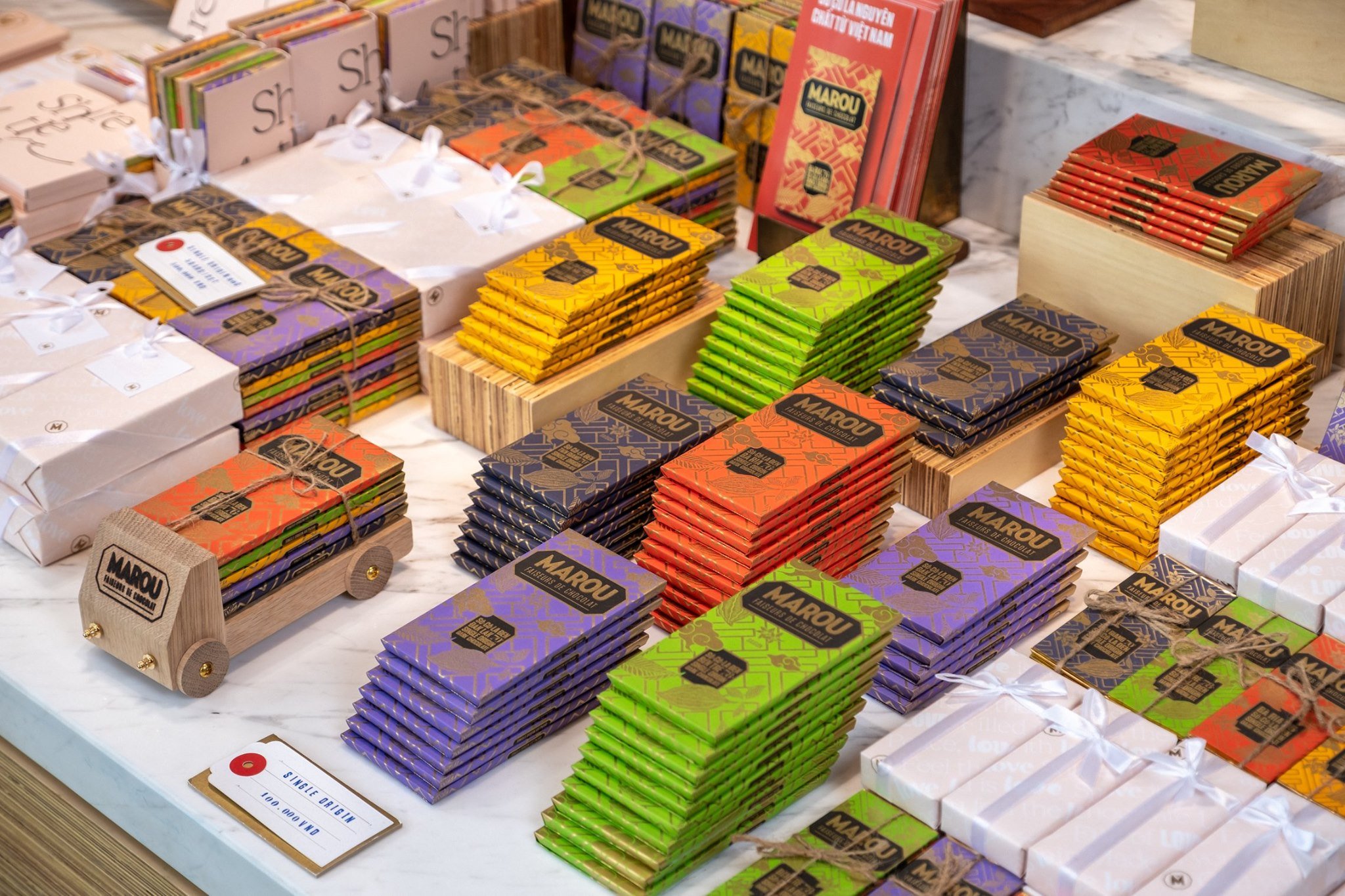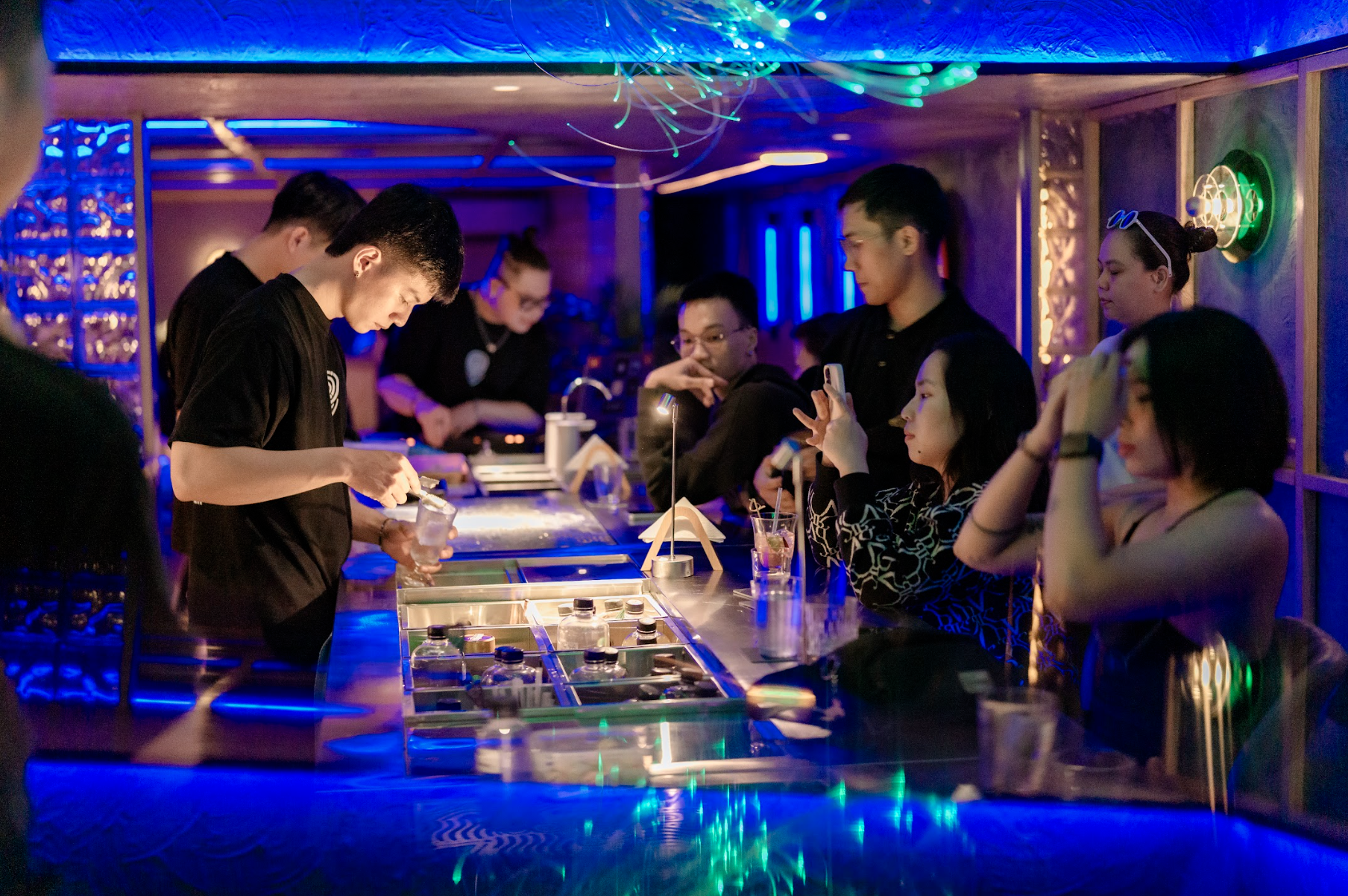Vietnam’s Love Affair with Chocolate
The story of chocolate in Vietnam is the story of Vietnam itself. With roots dating back to France’s colonisation of the country in the late 19th century, cacao plants witnessed as much of the strife and struggle of the ensuing wars and revolutions before blooming into the thriving state they’re in today. Here, we explore Vietnam’s history and love affair with chocolate.
Photo courtesy of Cacao Trace
Though not as well known as its savoury counterparts pho and banh mi, the popularity of Vietnamese chocolate is growing by the year. According to market research by Williams & Marshall Strategy, “the cocoa market in Vietnam is forecast to reach $66.23 million by 2025”, thus increasing at a CAGR of 4.96% per annum from the period of 2020 to 2025.
In 2015, the total retail value of chocolate was $44.3 million USD.” While such numbers promote the idea that chocolate always had a stake in the nation’s market, the fact of the matter is that this wasn’t always the case. The story of chocolate in Vietnam was a turbulent rollercoaster ride that began when the French first colonised the country, back in the late 19th century.
The early 1900s: The first chocolate seedling in Vietnam
When the French arrived, they were eager to stamp their identity on a colony. Taking notes from the Spanish in the Philippines, they brought their beloved cacao to Vietnam in hopes of creating a secondary cacao source away from home. This was the first seedling of chocolate in the country.
However, rather than blossoming into bountiful beauty as the French wanted, cultivation never met the expectations of the colonisers and as such, plantations dwindled into the early 20th century. The records of Father Gernot, a missionary who planted cacao trees in the Ben Tre region during the late 1800’s, revealed the atmosphere around cacao planting at the time. In a decree from 1907, he stated, “It seems, effectively, useless to encourage this [cacao] culture which has, until now, not yielded any satisfying result.”
The 1940s to 1950s: Failed promises and fallen cacao trees
When the French were defeated at Dien Bien Phu and finally pulled out of the country in 1954, they left behind their beloved cacao trees and their dreams of growing chocolate in Vietnam. With the start of the Vietnam War in 1955, many of those trees dotted around the Mekong Delta were destroyed and chocolate production in the nation seemed to be in a more miserable position than when the French first arrived. Years passed with little progress.
Then, in the 1980s, cacao seemed to make it to the light at the end of the tunnel. With interest from buyers in the Soviet Union and their Cuban comrades, a farmer exchange program was set up in hopes of bolstering cacao planting in the nation, but alas, even that was short-lived. The collapse of the Soviet Union was the final blow and once more, Vietnamese farmers were left to fend for themselves, understandably turning a blind eye to the time-consuming cacao tree and instead focusing on growing more lucrative crops like rice.
1990s: How real progress was made
Up until now, the story of chocolate in Vietnam doesn’t read like much of a love affair, but it’s at the turn of the century that things begin looking up. In particular, the efforts of one Dr Phuoc of Nong Lam agricultural university helped in bolstering the nation’s production of chocolate. Dr. Phuoc, “worked with international trading companies and organisations to invest in the development of Vietnamese cacao. [He also] aimed at finding the best cacao varieties for Vietnam.” While the world’s financial crisis in 2008 put a hold on cacao’s development in the country, it was back up and running within a few years.
Photo courtesy of Puratos Grand-Place
2000’s: Puratos Chocolate came to grow chocolate
A pioneer for chocolate in Vietnam, Puratos Grand-Place was founded by Belgian native, Gricha Safarian, who first saw the potential of Vietnam’s cacao in 1994. Since then, the company opened their first chocolate factory in 2001, the second in 2008, their first fermentation plant in 2009, their first pilot plantation in 2011, and their first roasting and grinding line in 2018.
Deeply connected with the farmers in the country, the brand also runs Cocoa Trace, a program that aims to solve “the problem of sustainable cocoa supply. Cocoa Trace’s approach is based on a combination of environmental, financial and human-centered development, all aimed at enhancing farmers’ knowledge and skills.” Their chocolate, which is characterised by the mixture of cacao with coconut or local fruit trees in the farmland like logan, durian, or pomelo, have led to Puratos Grand-Place receiving a Fine Flavour Cocoa Designation from the International Cocoa Organisation in 2016!
2011: A wave of fine flavour artisan chocolate enters the scene
Photo courtesy of Maison Marou Chocolate
Maison Marou
To talk about chocolate in Vietnam, one would be remiss not to include Maison Marou Chocolate. Founded by Frenchmen Vincent Mourou and Sam Maruta in 2011, the brand uses cacao beans sourced from six provinces in the South of Vietnam, each characterised by the singular properties of its terroir. Forever curious and always undeterred, Maruta says of their process, “some people buy cocoa beans, we hunt them.”
Their hunts have resulted in international recognition with features in publications like The New York Times, Paris Match, and Forbes. On top of this, Marou Chocolat is now available pretty much everywhere (yes—everywhere). But it’s not just global recognition that makes them such a force to be reckoned with. More so than the delectable flavours of their finely packaged sweet goodies, it’s the respect with which Mourou and Maruta treat the unsung heroes of the chocolate-making process—the farmers—that proves they are here to stay. This can be succinctly summarised by their sourcing philosophy: long-term relationships with producers.
Photo courtesy of The Cocoa Project
The Cocoa Project
A project helmed by Gricha and Khanh Linh, a French-Vietnamese woman who used to work as a management consultant at McKinsey & Company, The Cocoa Project is unique in their approach in that they focus on, “creating a chocolate culture in Vietnam.”
The premise is simple: rather than using Vietnamese cocoa produced by local farmers to create chocolate for the world, why not figure out how to cater to local tastes? With this as their driving ideology, The Cocoa Project’s first creation was choco-pop rice, something familiar to Vietnamese and yet brand-new and unique. Besides this, there are bon bons, cookies, cakes, chocolate nuts, drinks—even a Valentine’s Day truffle box for that special someone! Such creations and more are available online or at their flagship store in Saigon, where the young and old alike are welcomed to tasty treats and drinks 100% produced in the country they call home.
Photo courtesy of Alluvia
Alluvia
Helmed by the father-daughter duo of Xuan Ron and Diep, Alluvia prides itself on creating bean-to-bar chocolates from the banks of the Mekong Delta. By paying respect to the environment rather than tampering with it, the family is able to craft a chocolate characterised by a unique, fruity flavour. And what brings about this distinctly Vietnamese flavouring? The area around the legendary river is rich in alluvium.
This notion of respect runs throughout their whole operation, with local farmers planting cacao beans in accordance with the UTZ, the internationally recognised standard for high-quality farming. This results in a galaxy’s worth of delectable products: from chocolate bars to fruit flavoured coffee beans and even fruits covered in chocolate (take your pick from pineapple, banana, orange, mango, and ginger)! No matter your preference, you’re sure to find something just right for you.
Photo courtesy of Binon Cacao - Pictured: their Chocolate Bark
Binon Cacao
Producing chocolate from the Ba Ria - Vung Tau region of Southeastern Vietnam (an area within 20 degrees North and South of the equator in what’s otherwise known as the Cacao Belt), Binon Cacao has quickly made waves in Vietnam’s chocolate scene since starting in 2019.
They believe there’s no need to tamper with a cacao that’s already recognised world-wide with such accolades like the “Excellent Cacao” award from the “International Cacao Awards”. Staying true to this, Binon does little in the form of adding unnecessary flavourings to their chocolate making process. What results is a chocolate that keeps the sour, mango-like flavour of the cacao so you can really taste a product in its fresh and natural state.
Popular items include the Chocolate Bark (a bar of chocolate topped with nuts and dried fruit), a Chocolate Terrine that has a spongy, decadent texture, and there’s also a Cacao Powder made from 100% pure cacao.
Photo courtesy of Savall - Pictured: their 12 pc Bonbonerie box
Savall
With a history ranging all the way back to Barcelona in 1892, Savall takes its name from a family steeped in the work of handmade pastries, candies, and sweets. Starting as a pastry store in Barcelona by the patriarch of the family, Antoni Rene, generations passed until the shift was made to Danang by Victor Ceano-Vivas Savall. The move came as a result of family trips to Vietnam when he was a child, where he fell in love with the country, its culture, and of course, its food. Already a proud believer of his family’s traditions, after a move to Vietnam when he was older where he worked at the prestigious Four Seasons The Nam Hai, Victor decided he wanted to “combine the tradition of the family pastry with the interesting products of Vietnam.” The fruit of his labour was a shop opened in Danang in 2016.
Since then, Savall has kept the family name in high regard by sourcing entirely from local farmers to create a range of products. Their collection of bonbons are perfect for gifts to loved ones, while their non-dairy sorbets and ice creams made from fresh Dalat milk rely on only natural ingredients and never use artificial flavourings or colourings.
The Future:
Today, the chocolate market in Vietnam has never been better. A shift is underway that’s seeing people take a step away from the forever popular but almost mutant chocolate concoctions like the Oreo Socola Pie, the Choco Pie, and Milo drinks in favour of more carefully crafted creations. While the market is still relatively small and nascent, it’s worth noting that a large demand is fuelled by fine flavour chocolate like Maison Marou, The Cocoa Project, Alluvia, Binon Cacao, and Savall.
Artisans like these and many more are the reason why the future of chocolate in Vietnam is as hopeful as the future of the country itself. Emerging from decades of war and colonialism, we’re now seeing a nation in a forward march to re-discovering itself. Chocolate is a clear representation of that.
Sources:
https://vinacacao.com.vn/en/cocoa-trace-vietnamcacao/
https://www.cacaotrace.com/cocoa-world
https://binon-cacao.com/en/
https://savallchocolate.com/
https://savallchocolate.com/our-story
https://www.alluviachocolate.com/about-us/
https://fresh60days.com/#section2
https://www.marketresearch.com/Williams-Marshall-Strategy-v4196/Vietnam-Cocoa-Impact-COVID-Medium-13629676/
https://www.alluviachocolate.com/history-of-cacao-in-vietnam/
https://marouchocolate.com/story/about-cacao-and-chocolate-in-vietnam/
https://www.jovelchan.com/blog/the-cocoa-project-changing-narrative-chocolate-vietnam?rq=chocolate




















Like what you read?
Discover Vietnam’s coming-of-age food and drink scene with one of our tours and experiences exclusively available at Saigon Social